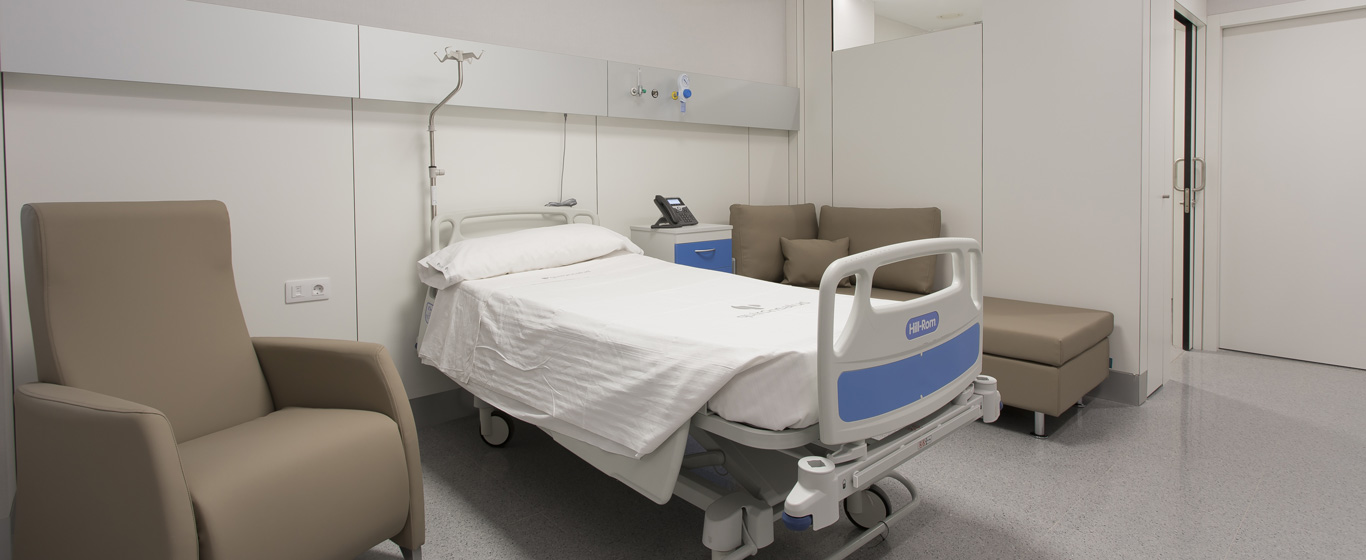Hodgkin Lymphoma
Is Hodgkin lymphoma curable? Everything about the causes, symptoms, prognosis, and most common treatments for this cancer originating in the lymphatic system.
Symptoms and Causes
Hodgkin lymphoma is a type of cancer that originates in white blood cells (lymphocytes), usually in B cells, which are responsible for producing antibodies. Consequently, the immune system is affected. It can develop almost anywhere in the body, as the lymphatic system is present throughout most of the organism.
Different types of Hodgkin lymphoma have been described based on their characteristics. Each type can develop in a completely different manner, often requiring distinct treatments. This type of lymphatic cancer is classified as follows:
- Classic Hodgkin lymphoma: This is the most common type. It occurs due to the growth of a type of cancerous cell called Reed-Sternberg cells in B lymphocytes. It is further divided into four subtypes:
- Nodular sclerosis Hodgkin lymphoma: This is the most frequent subtype. It usually originates in the lymph nodes of the cervical, supraclavicular, and thoracic regions. It primarily affects adolescents and young adults and, in most cases, has a favorable prognosis.
- Mixed cellularity Hodgkin lymphoma: The second most common subtype. In addition to Reed-Sternberg cells, other types of cancerous cells are present. It is more frequently seen in children under 14 years old, the elderly, or patients with immune system disorders. It has a high cure rate.
- Lymphocyte-rich Hodgkin lymphoma: A rare subtype that primarily affects older adults.
- Lymphocyte-depleted Hodgkin lymphoma: According to the Spanish Association Against Cancer, this accounts for 1% of cases and is most commonly found in individuals with HIV. It is typically diagnosed late and has a poorer prognosis.
- Nodular lymphocyte-predominant Hodgkin lymphoma: This is an uncommon subtype that is present in the lymph nodes of the neck or under the arm. It is characterized by the rapid growth of a variant of Reed-Sternberg cells known as lymphocytic or histiocytic cells. Patients generally respond well to treatment, as these neoplasms tend to be localized in a very specific area.
Scientific advancements in this field have significantly increased the life expectancy of Hodgkin lymphoma patients. According to data from the Spanish Society of Medical Oncology, the five-year survival rate is 80.6% for men and 82.6% for women.
Symptoms
The most prominent symptoms of Hodgkin lymphoma include:
- Pruritus (itching of the skin surrounding the affected area).
- Swollen lymph nodes (lymphadenopathy), primarily in the neck, groin, or armpit.
- Night sweats.
- Fatigue.
- Weight loss.
Causes
Hodgkin lymphoma develops when white blood cells undergo DNA changes, but the exact cause of this alteration remains undetermined.
Risk Factors
Although the causes are still unknown, certain factors have been identified that may contribute to the onset of Hodgkin lymphoma:
- Weakened immune system: Conditions such as AIDS, HIV, or autoimmune diseases.
- Family history: Although it is not currently considered a hereditary disease, as most diagnosed patients do not have a family history of the condition.
- Infection with certain viruses, especially Epstein-Barr virus, which causes mononucleosis.
Complications
Beyond the side effects of cancer treatment, Hodgkin lymphoma may lead to:
- Increased susceptibility to infections.
- Heart disease.
- Lung disease.
- Infertility.
- Metastasis to the spleen or liver and, less frequently, to the lungs, bones, or bone marrow.
Prevention
Hodgkin lymphoma cannot be prevented.
Which Doctor Treats Hodgkin Lymphoma?
The diagnosis and treatment of Hodgkin lymphoma involve specialists such as hematologists, medical oncologists, radiation oncologists, nuclear medicine experts, and palliative care professionals.
Diagnosis
The diagnosis of Hodgkin lymphoma begins with an evaluation of symptoms and a physical examination to check for swollen lymph nodes in the neck or armpits, which are typically painless. To rule out other conditions, blood and urine tests are conducted. Additionally, further tests are ordered to confirm the diagnosis:
- Lymph node biopsy: Tissue is collected through aspiration (using a needle), excision (a surgical procedure to remove the entire lymph node), or incision (removing only a sample). The tissue is then examined for the presence of Reed-Sternberg cells.
- Imaging tests: Used to assess the lymph nodes and determine the stage and extent of the cancer. Currently, the most widely used technique is PET-CT (a combination of positron emission tomography and computed tomography), which utilizes a small amount of reactive substance to detect the presence of cancerous cells.
Treatment
Hodgkin lymphoma requires a treatment plan tailored to each patient, often involving multiple therapies. It is common to use a combination of:
- Chemotherapy: A mix of chemical drugs that slow down cell division, thereby inhibiting cancer growth.
- Radiotherapy: High doses of ionizing radiation are applied to destroy cancer cells. It is commonly directed at the affected lymph nodes following chemotherapy.
- Targeted therapy: Monoclonal antibodies combined with chemical drugs are used to focus treatment on malignant cells while sparing healthy ones.
- Immunotherapy: Helps the body's immune system destroy cancerous cells.
- Stem cell transplant: Bone marrow cells are transferred to replace those affected by the disease. These cells may come from the patient or a donor.





















































